Apollo 12: more footprints on the moon
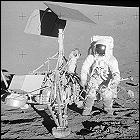 Astronauts Pete Conrad and Alan Bean land on the moon in the Apollo 12 lunar module Intrepid, a mere 600 feet away from the 1967 landing site of the unmanned Surveyor 3 probe. Pieces of Surveyor 3 are gathered for return to Earth to study the effects of prolonged exposure to the lunar environment. Conrad and Bean conduct two moonwalks, each lasting nearly four hours.
Astronauts Pete Conrad and Alan Bean land on the moon in the Apollo 12 lunar module Intrepid, a mere 600 feet away from the 1967 landing site of the unmanned Surveyor 3 probe. Pieces of Surveyor 3 are gathered for return to Earth to study the effects of prolonged exposure to the lunar environment. Conrad and Bean conduct two moonwalks, each lasting nearly four hours.
Surveyor 7 lands on the moon
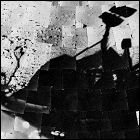 Surveyor 7, the last of NASA’s robotic moon landers, comes to a smooth landing on the moon’s Tycho Crater. Packed with more scientific instrument packages than any of its predecessors, Surveyor 7 studies the amount of dust kicked up by its retro rockets during landing, and lands closer to its planned target than any of the other Surveyors. Another experiment involves a test to see if a laser beam originated from Earth can be picked up by Surveyor’s cameras.
Surveyor 7, the last of NASA’s robotic moon landers, comes to a smooth landing on the moon’s Tycho Crater. Packed with more scientific instrument packages than any of its predecessors, Surveyor 7 studies the amount of dust kicked up by its retro rockets during landing, and lands closer to its planned target than any of the other Surveyors. Another experiment involves a test to see if a laser beam originated from Earth can be picked up by Surveyor’s cameras.
Surveyor 6 lands on the moon
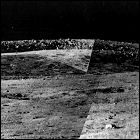 NASA’s robotic explorer Surveyor 6 lands safely on the moon, taking soil samples and pictures from the surface and, for the first time, testing an alpha-scattering surface analysis device of a type that would be included on many later missions to Mars. With the conclusion of Surveyor 6’s operations, the Surveyor probes have completed all of the tasks that were prerequisites to future Apollo manned moon missions. Surveyor 6 successfully lands in the same region of the moon that Surveyors 2 and 4 failed to reach.
NASA’s robotic explorer Surveyor 6 lands safely on the moon, taking soil samples and pictures from the surface and, for the first time, testing an alpha-scattering surface analysis device of a type that would be included on many later missions to Mars. With the conclusion of Surveyor 6’s operations, the Surveyor probes have completed all of the tasks that were prerequisites to future Apollo manned moon missions. Surveyor 6 successfully lands in the same region of the moon that Surveyors 2 and 4 failed to reach.
Surveyor 5 lands on the moon
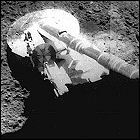 Despite an in-flight fuel pressure glitch that threatens to make this the third failure for the Surveyor program, Surveyor 5 successfully touches down in the moon’s Sea of Tranquility thanks to remote in-flight reprogramming by NASA engineers. Among its objectives on the lunar surface is a precise measurement of the elements comprising the lunar soil.
Despite an in-flight fuel pressure glitch that threatens to make this the third failure for the Surveyor program, Surveyor 5 successfully touches down in the moon’s Sea of Tranquility thanks to remote in-flight reprogramming by NASA engineers. Among its objectives on the lunar surface is a precise measurement of the elements comprising the lunar soil.
Surveyor 4 doesn’t land on the moon
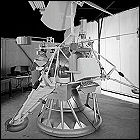 For the second time, one of NASA’s robotic Surveyor space probes fails to make it to the moon intact. Launched three days before, Surveyor 4 – which is, coincidentally, targeted to land in roughly the same area that previous lander Surveyor 2 failed to reach – is mere minutes from the lunar surface when contact is lost. There is no means of determining what has caused the failure, though the most likely hypothesis is an explosion of the solid fuel rockets intended to slow Surveyor 4’s descent prior to landing.
For the second time, one of NASA’s robotic Surveyor space probes fails to make it to the moon intact. Launched three days before, Surveyor 4 – which is, coincidentally, targeted to land in roughly the same area that previous lander Surveyor 2 failed to reach – is mere minutes from the lunar surface when contact is lost. There is no means of determining what has caused the failure, though the most likely hypothesis is an explosion of the solid fuel rockets intended to slow Surveyor 4’s descent prior to landing.
Surveyor 3 lands on the moon
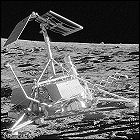 NASA’s robotic explorer Surveyor 3 touches down safely on the moon, snapping pictures and – with an extendable scoop arm – gathering and analyzing samples of lunar soil. Its landing site, a lunar plain called the Ocean of Storms, becomes the site of a unique long-term experiment: in two years, Surveyor 3 will become the first (and, to date, only) unmanned spacecraft to be personally inspected by humans after its landing.
NASA’s robotic explorer Surveyor 3 touches down safely on the moon, snapping pictures and – with an extendable scoop arm – gathering and analyzing samples of lunar soil. Its landing site, a lunar plain called the Ocean of Storms, becomes the site of a unique long-term experiment: in two years, Surveyor 3 will become the first (and, to date, only) unmanned spacecraft to be personally inspected by humans after its landing.
Surveyor 2 doesn’t land on the moon
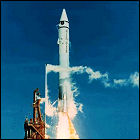 Three days after lifting off from Earth, NASA’s Surveyor 2 robotic probe is en route to the moon when all contact is lost. Thanks to an engine failure, Surveyor 2 is left tumbling out of control, and does eventually reach the moon, slamming into the lunar dust of Copernicus Crater at a leisurely speed of 6,000 miles per hour – perfect for traversing the distance between Earth and moon in a hurry, but not so good for landing intact.
Three days after lifting off from Earth, NASA’s Surveyor 2 robotic probe is en route to the moon when all contact is lost. Thanks to an engine failure, Surveyor 2 is left tumbling out of control, and does eventually reach the moon, slamming into the lunar dust of Copernicus Crater at a leisurely speed of 6,000 miles per hour – perfect for traversing the distance between Earth and moon in a hurry, but not so good for landing intact.
Surveyor 1 lands on the moon
 NASA’s first attempt to soft-land an unmanned space probe on another body in the solar system ends with a perfect landing: Surveyor 1 snaps photos from the moon’s surface, takes measurements of the local environment, and provides valuable engineering data about the surface that will prove helpful in constructing the much heavier Apollo lunar modules that will – it is hoped – take astronauts to the moon by the end of the decade.
NASA’s first attempt to soft-land an unmanned space probe on another body in the solar system ends with a perfect landing: Surveyor 1 snaps photos from the moon’s surface, takes measurements of the local environment, and provides valuable engineering data about the surface that will prove helpful in constructing the much heavier Apollo lunar modules that will – it is hoped – take astronauts to the moon by the end of the decade.
Surveyor
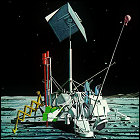 NASA begins soliciting studies from contractors for an unmanned robotic spacecraft to land on the moon. Intended to carry scientific instruments and television cameras to examine the moon from ground-level, the Surveyor landers are intended to reap their own benefit in the form of scientific data, but they will also serve as advanced scouting support missions for possible later manned landings on the moon.
NASA begins soliciting studies from contractors for an unmanned robotic spacecraft to land on the moon. Intended to carry scientific instruments and television cameras to examine the moon from ground-level, the Surveyor landers are intended to reap their own benefit in the form of scientific data, but they will also serve as advanced scouting support missions for possible later manned landings on the moon.